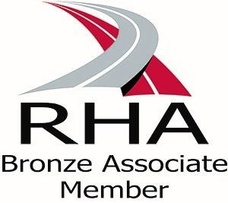Navigating Fleet Renewal and Driver Recruitment Amidst Declining C1 License Holders

We won’t know everything until the budget at the end of this month, but we do know that the new government has a vision of 1.5 million new homes over the next five years. And what follows on from that house-building mission is the need for furniture and appliances to be delivered to 1.5m homes.
Those home deliveries are often undertaken by two-person teams in 7.5T vehicles, that require the driver to have a C1 licence, a disappearing resource.
There are many, many people with C1 licences, but the latest licencing data released for September reveals that in the past four months there are over two-hundred thousand less with C1 licences. That’s two-hundred thousand less than when I wrote a piece on this subject earlier this year, see The Decline of 7.5 tonne Drivers Unveiling the Troubled Evolution of 7.5 tonne Driving.
Within the next ten years more than 85% of those who hold a C1 licence (but not a C licence) will be over 60 years old[1].
How joined-up is the strategy for the niche that these key drivers used to fill? The graph shows a gradual tendency to move away from the vehicles that require these drivers.
What the graph shows is four different categories of goods vehicles:
- The green line shows the number of articulated vehicles over 7.5T – vehicles that will generally require a CE licence
- The orange line is for rigid over 7.5T – big rigid trucks that generally require a C licence
- The blue line is the interesting one. It’s for vehicles over 3.5 but less than 7.5T – so big vans and small trucks that require a C1 licence – the only element of the graph that has reduced over the past decade
- The grey bars in the background show the number of Light Goods Vehicles – these are goods vehicles up to 3.5T and is measured against the right-hand axis as the number dwarfs the heavier goods vehicles
As an aside, it’s worth noting that under a quarter of the mileage of the light goods vehicles was for delivery/collection of goods in 2019-20, the last time that there were published figures[2], with the largest category being vans used for carrying equipment and tools by people carrying out trades, etc.
So, back to the main story, if you operate these types of vehicles, do you have a clear strategy for fleet renewal and driver recruitment? There are various options.
Presumably, if you’re using a vehicle that requires a C1 licence, you have goods that are too large or heavy for a small van, but not super-heavy, as we’re not talking vehicles that can carry lots of tonnes—we’re talking stuff like furniture and appliances for two-person home deliveries.
No individual in their right mind (and if you’re recruiting you do want someone who has good judgment!) is going to pay to train and take a C1 test if they are paying for it themselves. They’re going to go straight to CE since you haven’t needed to pass a test in a large rigid vehicle since November 2021. Or you could pay to put drivers’ mates through C1.
Increase pay to C or CE rates
So perhaps you up your pay to C or CE rates to make your (probably quite hard-to-fill) job attractive. If what you deliver is heavy, now could be the time to consider moving to heavier weight rigids – perhaps you could then have a tail-lift to make the job easier. There will be a more restricted speed on motorways[3] – something to consider depending on the patch you are operating in.
Smaller loads suitable for van drivers
Or you could split what you would currently consider to be a good run into smaller loads that will go into a small van that can be driven by someone with a car licence. But, unless you’re running an inefficient operation at the moment, you will need more drivers than you have now. There will be many more people with category B licences and they will cost less per person.
Wait and see
Or you could stick your head in the sand – ostriches don’t actually do that apparently, but some transport managers might! The reduction in the vehicles requiring a C1 licence (blue line) over the past decade is just under 10% (9.7% to be precise). That change may well be driven by businesses moving in either of those directions – up or down.
Other things to consider include not needing an operator’s licence or tachos for small vans – but you do still need to adhere to domestic hours regulations and keep records[4].
Smaller vehicles could be easier to park in tight estate environments. You may be able to have more family-friendly shifts if vehicles need to come back to base more often. That may enable you to widen the pool you recruit from. It may make it easier to move to electric.
But there are some downsides in moving down. Potentially eroded driving skill levels, although the sort of person carrying out home deliveries of appliances is a skilled worker carrying out installations and with DBS checks as they are going into people’s homes. You will (unfortunately) be contributing to increased congestion.
Up or down - which way to go? What do you think? What are you doing?
…and crucially, is your budget going to cope?
Kirsten Tisdale FCILT, Director – Logistics Consulting, Aricia Limited
11th October 2024
[1] https://www.data.gov.uk/dataset/d0be1ed2-9907-4ec4-b552-c048f6aec16a/gb-driving-licence-data
[2] https://www.gov.uk/government/statistics/van-statistics-2019-to-2020
[3] https://www.highwaycodeuk.co.uk/changes-and-answers/new-higher-speed-limits-for-lorries-in-england-and-wales
[4] https://www.gov.uk/drivers-hours/gb-domestic-rules
Driver Recruitment Solutions




























